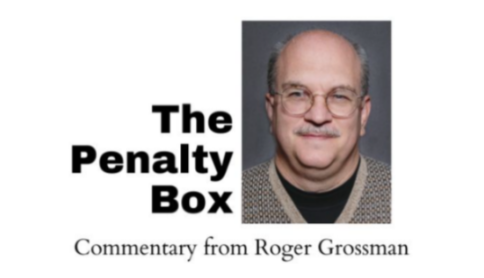By Roger Grossman
News Now Warsaw
For as long as Indiana has hosted high school state tournaments, Hoosiers have been pouring over sectional draws.
We examine every inch of it like the IRS does when we send in our tax returns — looking for the obvious and the not-so-obvious intricacies of every team on every line compared to the teams on the lines adjacent to them.
It’s been described as another version of opening presents on Christmas Day to see what’s inside.
I don’t know about you, but I like Christmas Day better, but we all get the point, right?
It’s a big deal.
Social media ramped up the discussion and dissection of the bracket reveals in massive ways. Reactions are now instantaneous.
So is the outrage.
Most of that angst comes from that segment of the sports-lovin’ crowd that believes the state legislature should step in and demand that the IHSAA assign rankings to each team within each sectional in each sport.
This is called “seeding”, and its purpose is simple — to avoid having the perceived best teams in a sectional play each other in early rounds with the hope of having the best possible championship game.
Pro sports do this, and college basketball is famous for it.
But that four letter word is the biggest word of all — “hope.”
The beauty of our high school tournaments in Indiana, and in other states, is that these tournaments are one-and-done events where the winner goes on and the loser goes home.
No best two-out-of-three series.
Single elimination.
Lose, and you’re out.
If the thrill of having a Game 7 is such a big deal (and it is), then high school sports tournaments give you a Game 7 feel for every game.
The seeding advocates want the best games to be at its end. They hate the thought of having the best two teams play in the first game of the tournament, and the worst two teams getting byes, playing each other in the semifinals and one of them playing the best team in the championship game which turns out to be a blowout and very anti-climactic.
I totally get that.
You feel a big “but” coming, don’t you?
But (there it is) there are inherent problems with this concept.
First, a lot of the discussion focuses on how many teams are seeded. Ideas have included seeding all of the teams, while others only separate the top two teams.
The biggest problem with this is “who is going to decide the seeds for each sectional?”
If you let coaches and athletic directors do it, you run the risk of having coaches vote for teams in such a way that might aid their own team. Example: Team X hasn’t beaten Team Y in 10 years, so Team X’s coach rates his own team and Team Y higher or lower intentionally so that their team doesn’t have to face them until as late possible.
Not saying all coaches would do that … simply suggesting the door is open for it.
You can’t ask the IHSAA to do it, because they don’t have time to know all of the teams in each sectional and how they stack up against each other. And you most certainly can’t seed them based on win-loss records because teams would be loading up weak schedules to get a higher seed.
And, if you can get past that, then you get to decide whether you seed only the top two teams, the top four teams or all the teams.
Are we only seeding the sectional, or will we be seeding each level? Are we taking all the teams from the North and seeding them for the regional rounds?
Or can we just leave the blind draw alone and say, “this is who you are going to play, and this is the order of teams you have to play to win a state championship” and be done with it?
There are already some quirky aspects to the tournaments the way they are constructed now. More changes leave one’s imagination vulnerable to the idea that the IHSAA might use such adjustments to further a hidden agenda. I am not suggesting that’s happened, is happening or will happen. I am simply saying the IHSAA officials’ handbook speaks clearly of avoiding not only impropriety but also the appearance of impropriety.
I trust them to do that.
Blind draws are, and will remain, the best way to structure high school tournaments. There are too many variables from conference to conference and regional to region to compare schools and align them for the most important games of their season.
So let’s don’t.





